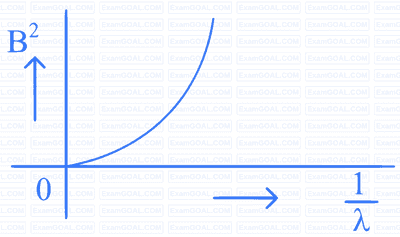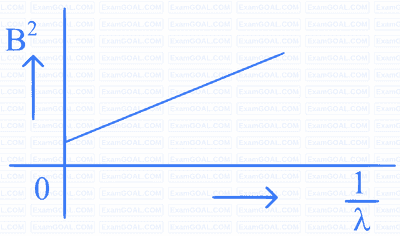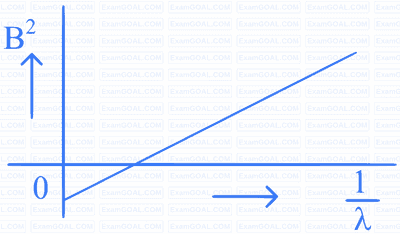
If $$\hat{n}_1, \hat{n}_2$$ and $$\hat{\mathrm{t}}$$ represent, unit vectors along the incident ray, reflected ray and normal to the surface respectively, then


A beam of light of wavelength $$\lambda$$ falls on a metal having work function $$\phi$$ placed in a magnetic field B. The most energetic electrons, perpendicular to the field are bent in circular arcs of radius R. If the experiment is performed for different values of $$\lambda$$, then $$\mathrm{B}^2$$ vs. $$\frac{1}{\lambda}$$ graph will look like (keeping all other quantities constant)





A charged particle moving with a velocity $$\vec{v}=v_1 \hat{i}+v_2 \hat{j}$$ in a magnetic field $$\vec{B}$$ experiences a force $$\vec{F}=F_1 \hat{i}+F_2 \hat{j}$$. Here $$v_1, v_2, F_1, F_2$$ all are constants. Then $$\overrightarrow{\mathrm{B}}$$ can be

Two straight conducting plates form an angle $$\theta$$ where their ends are joined. A conducting bar in contact with the plates and forming an isosceles triangle with them starts at the vertex at time $$t=0$$ and moves with constant velocity $$\vec{v}$$ to the right as shown in figure. A magnetic field $$\vec{B}$$ points out of the page. The magnitude of emf induced at $$t=1$$ second will be
